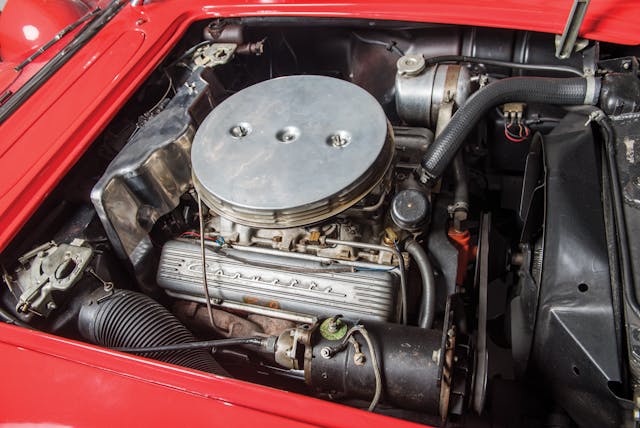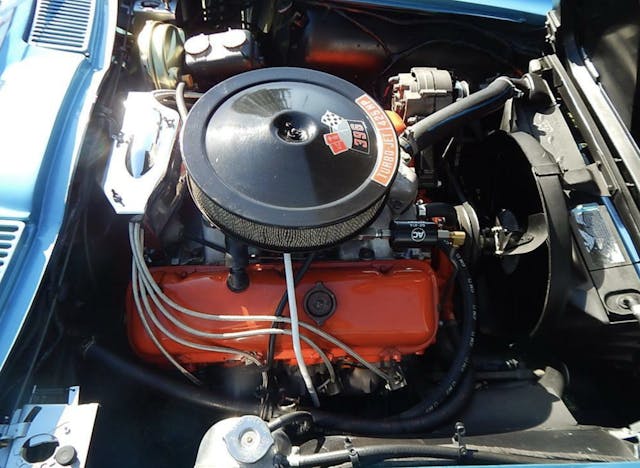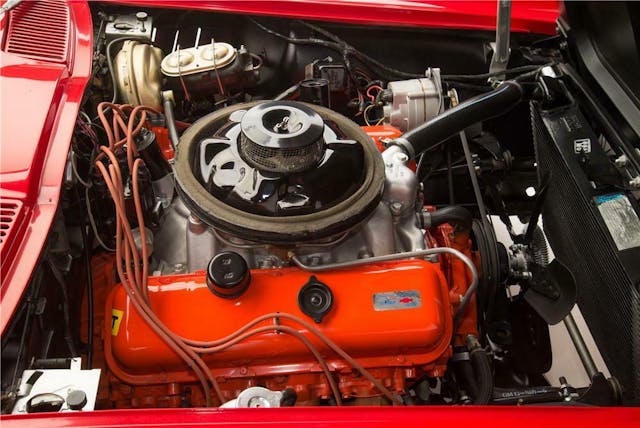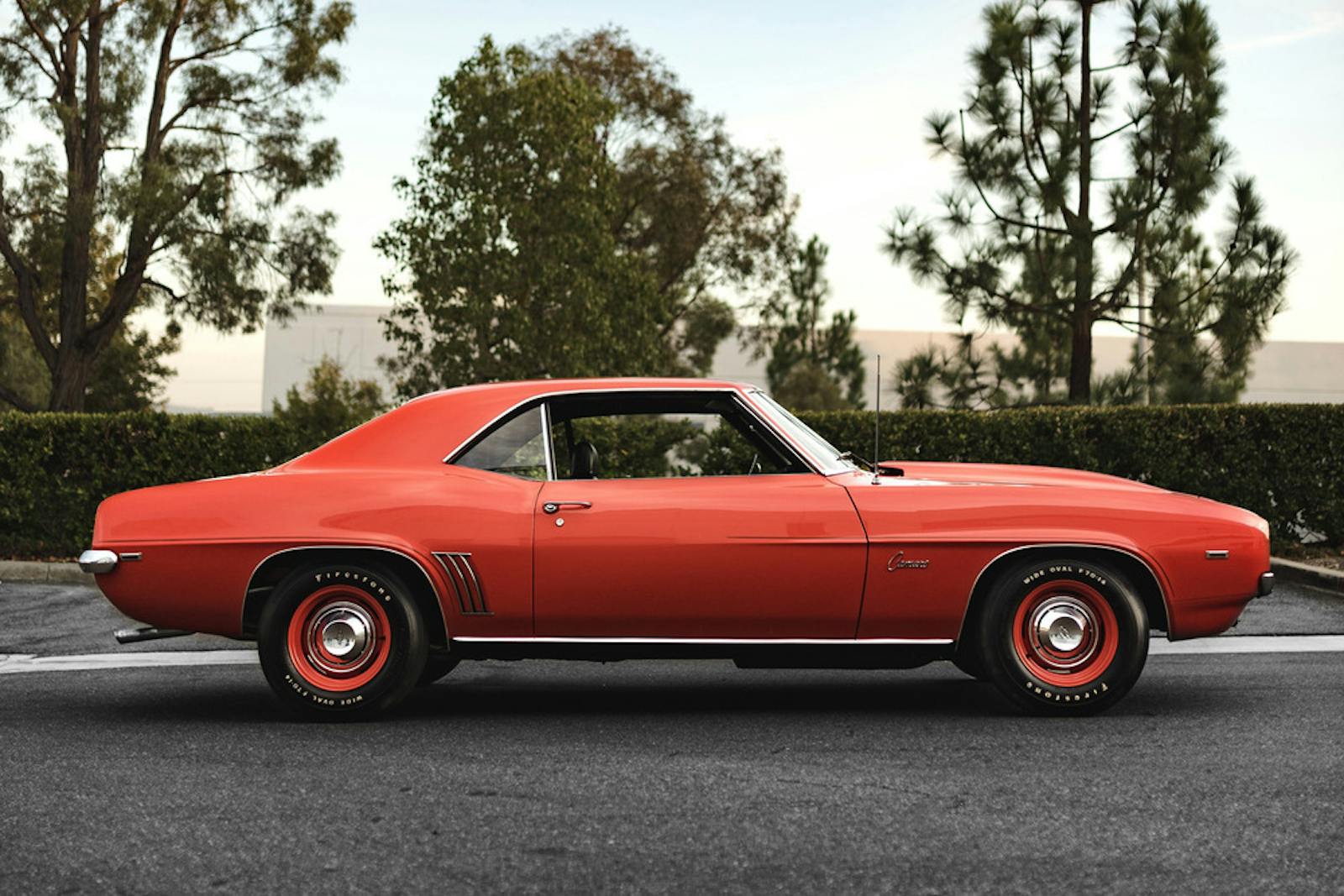The top 10 Corvette V-8s from the ’50s, ’60s, and ’70s
June 30th marks the anniversary of America’s sports car entering production. On that date in 1953, the first Corvette was built. Although there have been ups and downs, and supposedly a few brushes with cancellation, today the mid-engine Stingray is in high demand and the future of the crossed flags seems bright.
We’re taking this opportunity to look back at our favorite V-8s of the era of high octane, high compression ratios, and high horsepower. This list essentially gathers our top 10 Corvette engines before the era of electronic fuel injection. So here they are, in roughly chronological order based on their introductions. As usual, feel free to nominate your favorites that we may have missed in the comments below.
265

Corvette has been around so long that it predates the vaunted Chevrolet small-block. So while the Corvette was initially offered with only the Blue Flame Six in 1953 and ’54, the V-8 debuted in 1955 and set the tone for the following 65 years. With just 195 ponies, the first V-8 wasn’t a powerhouse, but it was a milestone.
283 2×4

Corvette has a long history of offering multiple carburetors. The Blue Flame Six used triple single-barrel carbs to squeeze 155 horses out of the 235-cubic-inch inline-six, but that was soon eclipsed in a big way once the small-block V-8 showed up. In 1957, two flavors of 283 offered dual four-barrels, one at 244 hp and another at 270. The visual impact of the carbs was dampened a bit by the large, single air cleaner, but there were other engines available if something a bit more flashy was required
283 Fuelie

While the dual four-barrel 283 we just mentioned was nearly as potent as the mechanical fuel-injected 283 when it was initially offered in 1957 with 250- and 283-hp variants, there are few ’50s engines that turn heads and drop jaws like an early “fuelie.” By 1961, its output had reached 315 hp.
L84 327 Fuelie

This may be the best-looking small-block ever installed in a Corvette, but it was also a serious performer. While the 327 fuelie debuted in 1962 in the C1 Corvette, the second-generation Rochester mechanical fuel-injection system debuted with the C2 Corvette in 1963. The new manifold used a larger plenum to better feed the 327. As you can see from the sticker on the valve cover, the L84 was initially rated at 360 hp, making it one of the most power-dense small-blocks of its era. When combined with the gorgeous 1963 Corvette coupe’s split-window styling, it made one of the most desirable combinations for Corvette collectors. For 1964, the engine was rated at 375 hp, making it the most powerful small-block until it was unseated by the DOHC LT5. Granted, we’re talking about a totally different, much more generous horsepower-rating system, but a pushrod motor wouldn’t beat that figure until the Z06’s 5.7-liter LS6 in 1999.
L76 327

The L76 debuted as a high-performance variant of the 327 that used a single four-barrel carb and a solid-lifter cam, the same cam as the L84. Initially rated at 340 hp, it also received an updated camshaft for 1964, the legendary “30-30” cam. That brought a high-revving 365 hp to the table, just a touch below the L48, making it one of the most beloved 327s to ever sit between a Chevy’s frame rails.
L78 396

The Mystery-Motor-powered split-window Corvettes made their debuts during Daytona Speed Week in 1963, but the public would have to wait until they could buy their very own big-block Corvette from the factory. Aside from the milestone of being the first production big-block in a Corvette, the 1965 396, especially the L78, also punched above its weight, making a huge splash and proving that the race-bred big-block wasn’t just a truck motor. The L78 was initially rated at 425 hp, the only year it was available in the Corvette, but it was used in Chevrolet full-size cars and muscle cars through 1970. While its rated output dropped to 375 hp, it was still the same engine inside.
L89 427

The 427 is the quintessential Corvette big-block. The triple two-barrel carbs topped with their signature triangular air cleaner are a hallmark of both C2 Sting Rays and C3 Stingrays. Both the L71 and L89 used that 3×2 induction and both were rated at 435 hp, so they’re amazing mills, but the L89 featured aluminum heads with improved exhaust flow. Not only did it take some weight off the front end of the car, it had to have added a bit of power as well, making the 427 our pick for top Corvette to feature “three deuces,” as Chevrolet advertising put it.
L88 427

As much as we love the looks of a trio of two-barrel carbs, we also know that a properly tuned four-barrel can make a ton of power with a fraction of the expense or hassle. So when it comes to performance, we’ll never knock a simple induction system that works, and the L88 does just that. This high-compression engine wore aluminum heads like the L89, but took the performance up a notch or two with even higher compression. It was a race engine barely tamed for the street and an interior label informed drivers as much: “Warning: Vehicle must operate on a fuel having a minimum of 103 research octane and 95 motor octane or engine damage may result.”
It somehow received a 430-hp rating, yet most gearheads estimate its output was closer to 500 hp, especially once it was opened up with a set of headers. The fact that the carb is surrounded by a wire screen implies that it’s capable of inhaling birds, rodents, and any small pets that may wander too close.
ZL1

Take an L88 and build it with an aluminum block; that’s the ZL1. It was the brainchild of Vince Piggins, a racer at heart who pioneered Chevrolet’s race-engine development when Chevy was supposed to be keeping its hands off any and all racing. He championed the development of potent big-blocks and convinced Bruce McLaren that an all-aluminum big-block was just what his Can-Am racers needed, and he was right. Just two 1969 Corvettes were built with the engine, and they’re practically the Holy Grail of Stingrays.
LT-1 350

When the SCCA allowed competitors to use a de-stroked version of their road-going engines in order to meet the 5.0-liter displacement limit, that spelled the end of Chevrolet’s high-revving 302 V-8. However, if you’ve got cubic inches to make loads of torque, you don’t need to be quite so high-revving. Chevrolet’s LT-1 350 was the successor to the 302 and the longer stroke of the 350—3.48 versus 3.0 inches—allowing for a much more street-friendly engine that still produced an impressive 370 hp. Due to lowered compression ratios and a change from gross to net power ratings, the LT1 dropped to 255 hp by 1972, its final year.


